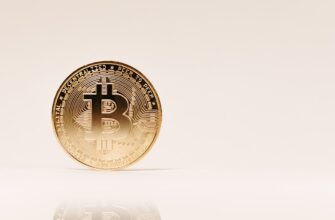Peer-to-peer (P2P) trading has revolutionized how people buy and sell cryptocurrencies like Tether (USDT). The **P2P USDT rate** refers to the exchange rate agreed upon between two individuals without intermediaries. Unlike centralized exchanges, P2P rates vary widely based on location, payment methods, and trader reputation. Understanding these rates is crucial—getting a favorable deal can save you money, while poor choices may lead to losses or scams. In this guide, we’ll break down what drives P2P USDT rates, how to secure the best prices, and strategies to trade safely.
## Factors Influencing P2P USDT Rates
P2P USDT rates aren’t fixed—they fluctuate due to several key factors. Here’s what shapes them:
– **Supply and Demand**: High buyer demand in a region can push rates above market value, while excess seller supply may lower them. For example, during economic instability, USDT demand often surges, increasing P2P premiums.
– **Payment Method**: Rates differ based on how you pay. Bank transfers usually offer the best rates due to lower fraud risk, while cash or e-wallets (like PayPal) often carry higher premiums.
– **Platform Fees**: P2P exchanges (e.g., Binance P2P, LocalBitcoins) charge fees that sellers factor into rates. A 0.1% fee platform might show lower rates than one with 1% fees.
– **Market Volatility**: If Bitcoin or Ethereum prices swing wildly, USDT rates may spike as traders seek stability, especially in volatile markets.
– **Trader Reputation**: Highly rated sellers command better rates due to trust. New sellers might offer discounts to attract buyers.
– **Geographic Factors**: Local regulations, currency stability, and banking access impact rates. Countries with strict capital controls often see higher USDT premiums.
## How to Find the Best P2P USDT Rates
Securing competitive rates requires strategy. Follow these steps to maximize value:
1. **Compare Platforms**: Check multiple P2P marketplaces like Binance, Bybit, or Paxful. Rates can vary by 1-5% across platforms—always cross-reference.
2. **Filter by Payment Method**: Select your preferred payment option (e.g., SEPA, Wise, or cash deposit) to see real-time rates. Bank transfers typically yield the lowest premiums.
3. **Analyze Seller Metrics**: Prioritize traders with high completion rates (95%+) and positive reviews. Avoid new accounts with minimal trade history.
4. **Set Rate Alerts**: Use exchange tools to alert you when rates hit your target. Timing matters—liquidity often peaks during regional business hours.
5. **Leverage Market Trends**: Buy during crypto market dips when USDT demand drops, or sell when volatility spikes for better premiums.
6. **Negotiate Tactfully**: On platforms allowing messaging, politely ask sellers for slight rate improvements—especially for large transactions.
## Risks and How to Mitigate Them
P2P USDT trading carries unique risks. Protect yourself with these precautions:
**Common Risks:**
– **Scams**: Fake sellers may disappear after payment or use stolen accounts.
– **Price Volatility**: USDT can briefly depeg from $1 during market stress, affecting your rate mid-trade.
– **Payment Reversals**: Fraudsters might cancel bank transfers or chargebacks after receiving USDT.
– **Regulatory Uncertainty**: Bans or restrictions in your country could freeze transactions.
**Risk Mitigation Strategies:**
– **Use Escrow Services**: Only trade on platforms that hold USDT in escrow until payment confirmation. Never release funds prematurely.
– **Verify Payment Receipts**: For bank transfers, confirm funds are irrevocably in your account before releasing USDT. Screenshots can be faked.
– **Start Small**: Test new sellers with minor trades (e.g., $50) before larger deals.
– **Avoid Off-Platform Deals**: Scammers lure users to Telegram or WhatsApp—keep all communication and transactions on the P2P exchange.
– **Monitor Market News**: Track USDT depegging events or regulatory changes via sites like CoinGecko or CryptoPanic.
## P2P USDT Rate FAQ
**Q1: What exactly is the P2P USDT rate?**
A: It’s the exchange rate for USDT (a stablecoin pegged to $1) set by individual sellers in P2P trades. Rates include premiums or discounts based on payment methods, location, and market conditions.
**Q2: Why is the P2P USDT rate different from the market price?**
A: P2P rates reflect local supply/demand imbalances, payment risks, and platform fees—unlike centralized exchanges that use global order books. For instance, USDT might trade at a 2% premium in a country with limited banking access.
**Q3: How do I know if a P2P USDT rate is fair?**
A: Compare it against real-time averages on platforms like Binance P2P. If a rate deviates by over 3% from others for the same payment method, it may signal a scam or liquidity issue.
**Q4: Can I negotiate P2P USDT rates?**
A: Yes! Many platforms allow buyers to message sellers. For trades above $500, polite negotiation can secure 0.5-1% better rates.
**Q5: What’s the safest payment method for P2P USDT trades?**
A: Bank transfers are generally safest due to traceability and lower reversal risks. Avoid irreversible methods like gift cards or cash deposits with strangers.
**Q6: How does market volatility affect P2P USDT rates?**
A: During crypto crashes, demand for stablecoins like USDT surges, pushing P2P rates above $1. In calm markets, rates align closer to the peg.
Mastering P2P USDT rates empowers you to trade efficiently while minimizing risks. Always prioritize security—choose reputable platforms, verify sellers, and stay informed. With these insights, you’re equipped to navigate the P2P landscape confidently.








